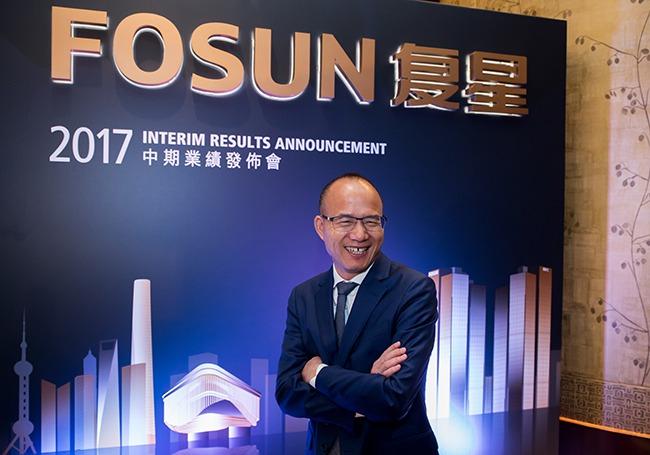

A drop in China’s overseas investments this year will likely be a temporary blip in a longer-term trend toward the globalization of its top companies and economy, according to a scholar at one of the country’s top research centers on globalization. Consumers that are important source of growth at home in the world’s most populous economy will notably help drive overseas acquisitions, too.
“Consumers are enjoying a rise in discretionary income, and want better brands and services,” says Wang Cong, a finance professor and co-director of the “key talent” program for Chinese companies going global at the China Europe International Business School in Shanghai. “It’s natural for Chinese companies to go out (overseas) and find suitable targets. This will be a general trend in the next 5-10 years.”
Non-financial overseas direct investment nevertheless fell by 41% in the first 10 months of the year to $86 billion after authorities tightened approvals for international projects that include real estate and were seen as too pricey. Overseas expansion, however, was a notable trend in the past 12 months among companies led by members of the 2017 Forbes China Rich List unveiled on Thursday. (See related story here.) Among other recent deals, No. 2 Ma Huateng’s Internet heavyweight Tencent has purchased a 12% stake in Snap worth $2 billion, according to a filing this month; No. 3 Jack Ma’s e-commerce leader Alibaba paid $1 billion earlier this year to raise its stake in Southeast Asia e-commerce firm Lazard (see related story here); No. 16 Guo Guangchang’s Fosun International this year paid $1.1 billion for a 74% stake in Gland Pharmaceuticals of India (see related story here); No. 18 Liu Qiangdong’s JD.com, one of Alibaba’s biggest Chinese rivals, said in June it would invest $397 million and become one of the largest shareholders of global fashion site Farfetch; and in the transportation field, No. 55 Wang Chuanfu’s BYD in October celebrated the expansion of a bus factory in California with leaders from both U.S. major political parties. (See cover profile of Wang in new issue of Forbes Asia here.)
Overseas consumer brands will be targeted by Chinese companies in part because China has yet to develop many of its own higher quality names, Wang said in an interview. “There is a lack domestically,” he said. Besides consumer-related targets, Chinese businesses are also likely to continue to invest in technology and machinery, areas in which the government supports overseas investments.
The U.S. and Europe possess “technology for Chinese companies to acquire,” said Wang. The relatively strong legal environment in the two also makes businesses feel safer, he said. Countries that are connected to China’s “one belt, one road” initiative will be of interest, too, because of favorable government policies to promote investment in countries tied to its historic Silk Road markets. In the short term, however, U.S. and Europe “will still dominate” when it comes to overseas investment amount by virtue of the high cost of entering those markets or buying assets there, Wang said.
Compared with state-owned enterprises, private sector businesses ultimately are likely to lead China’s future overseas investment push. “The Chinese government will try to downplay the role” of state-owned enterprises, he said. “Non-SOEs will face fewer obstacles.”
The most successful private-sector businesses abroad are those with “founders that are smart and hardworking,” said Wang. “Most important, they tend to have an open-mindedness about new business models and culture. The know the domestic markets already, and can buy a foreign asset and bring it home,” said the scholar. Successfully linking the two is “the key for success.”
–Follow me on Twitter @rflannerychina
more recommended stories
 U.S. House Speaker Pelosi’s Stock Trades Attract A Growing Following Online
U.S. House Speaker Pelosi’s Stock Trades Attract A Growing Following OnlineU.S. House Speaker Nancy Pelosi (D-CA).
 NYC Mayor Receives First Paycheck in Converted Bitcoin and Ethereum
NYC Mayor Receives First Paycheck in Converted Bitcoin and EthereumBy Casey Wagner/January 20, 2022, 12:22 pm.
 Continued Student Loan Payment Relief During the COVID-19 Pandemic
Continued Student Loan Payment Relief During the COVID-19 PandemicMemorandum for the Secretary of EducationSubject: .
 This Day in History: Black Thursday Marks Start of Stock Market Crash
This Day in History: Black Thursday Marks Start of Stock Market CrashOn this day in 1929, nearly.
 Elon Musk And Andrew Yang Support UBI – Is America Ready?
Elon Musk And Andrew Yang Support UBI – Is America Ready?Universal basic income (or UBI) is.
 Bayer’s Stock Has Lost 44% Of Its Value Since They Bought Monsanto
Bayer’s Stock Has Lost 44% Of Its Value Since They Bought MonsantoBy John Vibes / Truth Theory Bayer’s.
